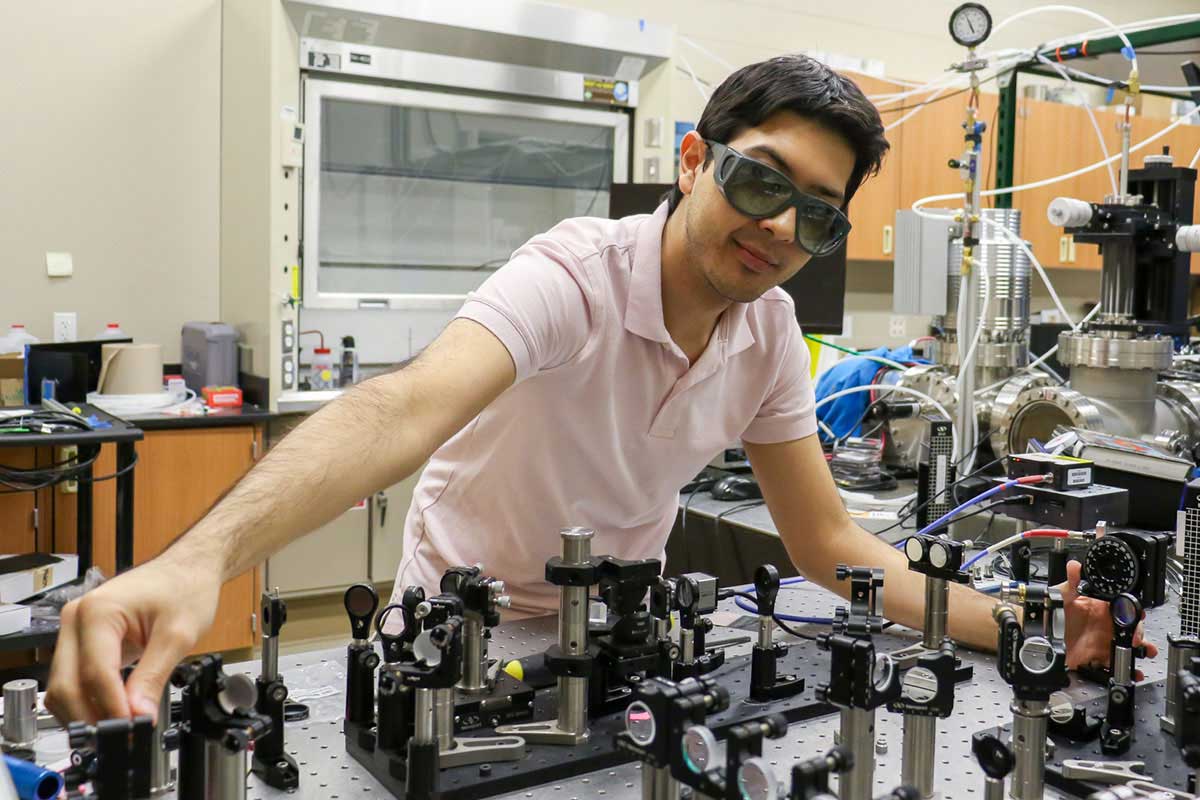Physics doctoral candidate John Beetar spends his day studying how electrons interact on an extremely short timescale, called attoseconds.
At this scale, electron dynamics are still not very well understood, especially in solid materials. That’s one reason Beetar is driven to conduct his work. He wants to contribute to the understanding of this highly evolving field, which could someday lead to faster wireless communications and quantum computers.
Beetar’s research uses a new kind of laser beam to shoot pulses of light into different materials. Using these pulses as an attosecond strobe light, he takes “snapshots” to figure out what the electrons are doing at a particular instant in time.
One of the main challenges in this type of research is to create the laser pulses, which are like tiny “bullets” of light. Beetar is introducing new ways to create the required pulses using simpler, more reliable laser technologies. Whereas current technology requires large, complex laser facilities and highly trained operators, Beetar’s technique can be applied using lasers which are more commonly used in industrial applications such as glass cutting.
“We are now developing new technology that will allow us to perform measurements that can’t currently be done anywhere else.” — John Beetar, UCF doctoral candidate
UCF has earned a reputation for excellent work within the ultrafast community, which is one reason Beetar selected the university for his doctoral work. These experts include Mike Chini, assistant professor of physics and Beetar’s lab director.
“UCF is very well positioned to take a leading role in the ultrafast community. We are now developing new technology that will allow us to perform measurements that can’t currently be done anywhere else,” Beetar says. “There are still hurdles that we need to overcome, but if we are able to make this technology work then we can contribute to the scientific community in a big way.”
Beetar will be presenting his research at UCF’s Student Research Week, March 30-April 3.




